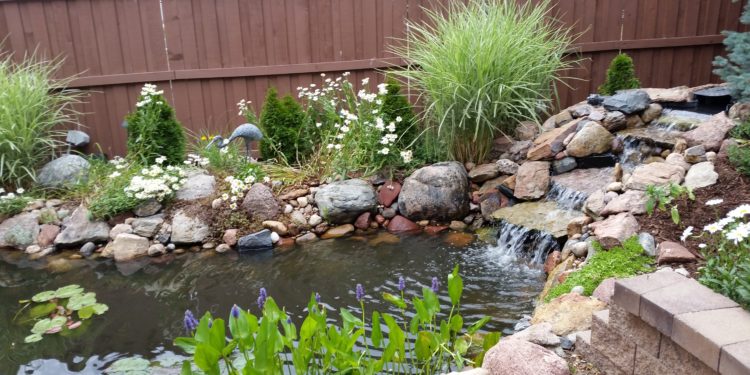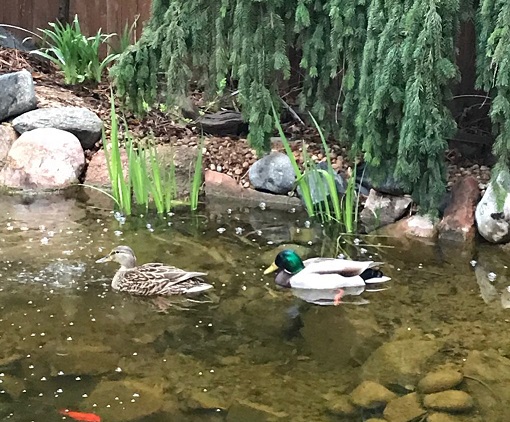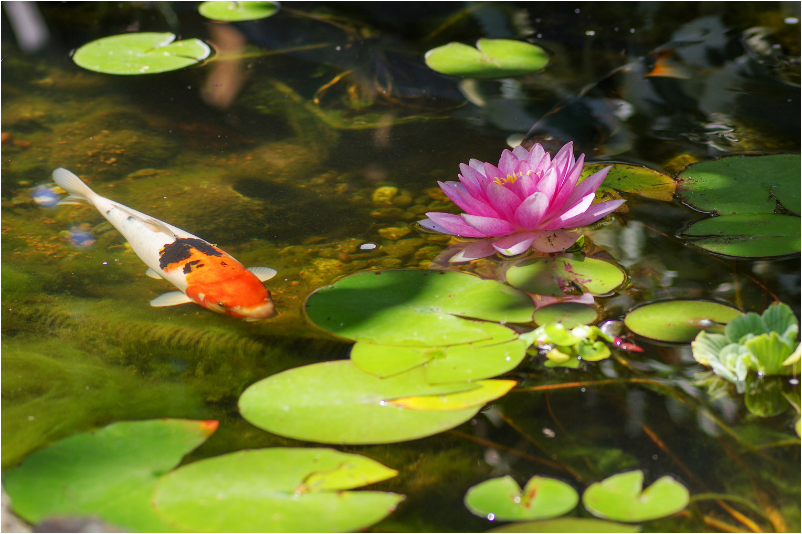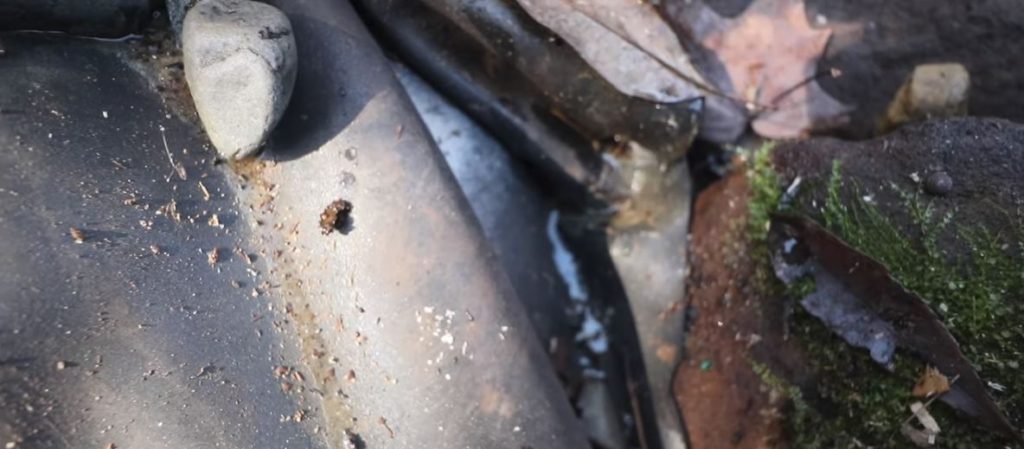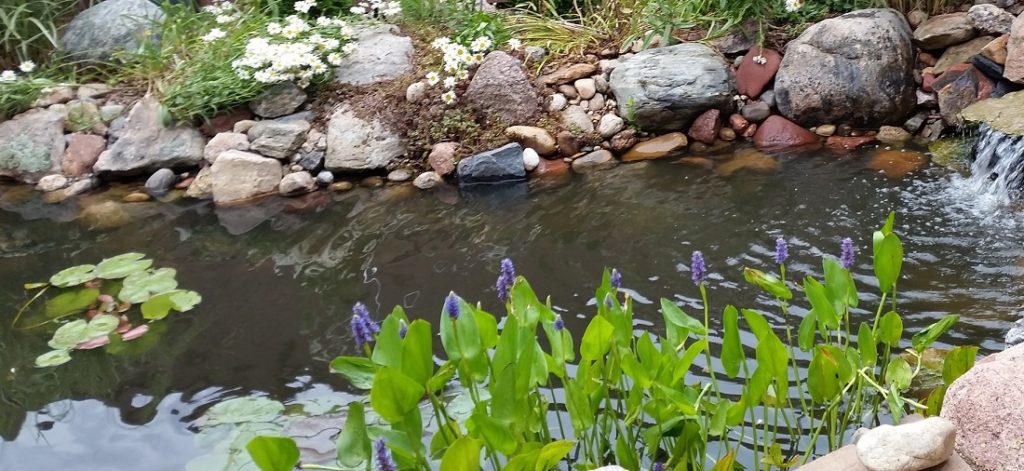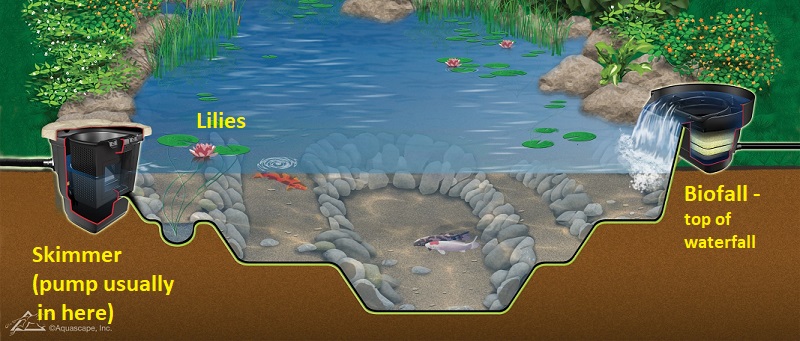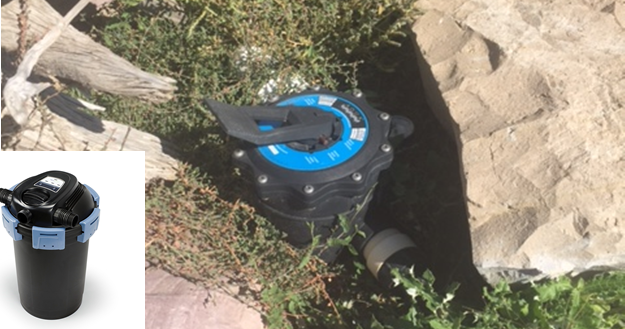| How will you care for your pond while traveling? It is very important to set up everything before you go. Here are some tips for a worry-free trip: 1. Circulation – Make sure to let the pump run while you are gone to assist with oxygenation and circulation. Stagnant ponds just get gross! 2. Filters – Clean all filters, flush canister filters (if you have them) and remove any dead plants before you leave. 3. Predators – If you have had any problem with herons or other predators, set up a net over the pond. 4. Feeding the fish – Put in some slow-release fish food. Basically, the fish will do best if consistency in their feeding schedule is kept. If you have a human feeding them, make sure they understand NOT to overfeed them. I feel like this last sentence should be in all caps, but I don’t want to yell. Consider giving them a measuring cup with the correct amount of food marked for your fish and tell them to use that, and even if the fish tell them they are STARVING not to feed them more (cause they lie). |
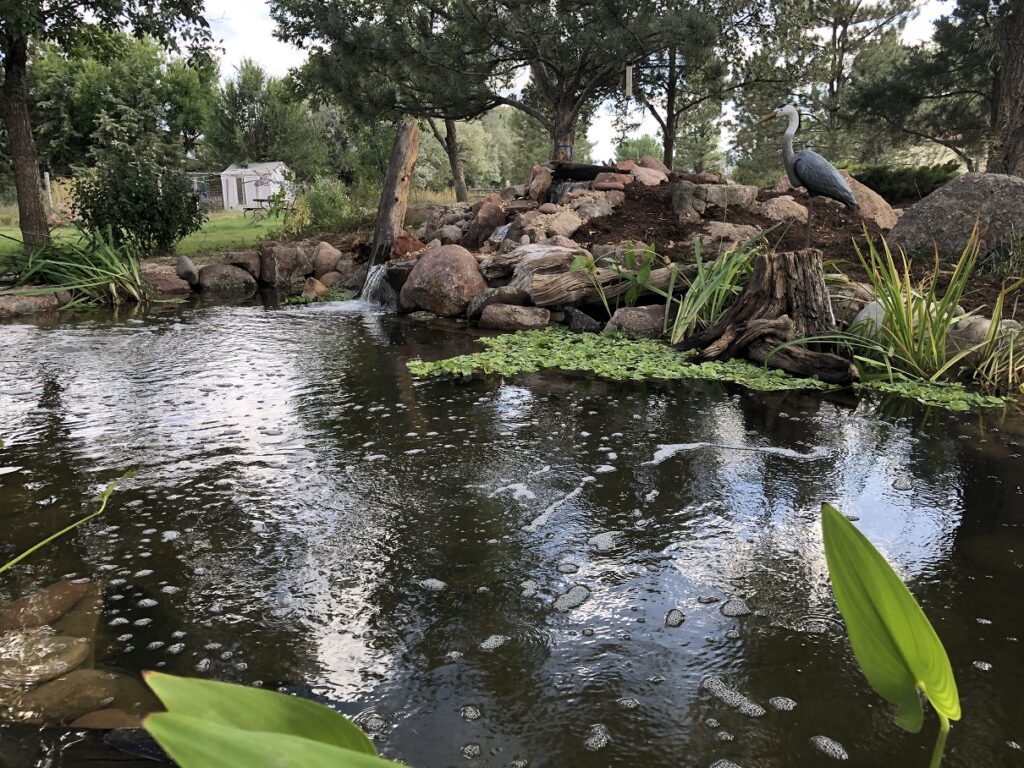
5. Pump Safety – Install a Pump Safety Switch – this is a little gizmo that will turn off your pump if the water gets too low, ensuring that your pump will not burn out! If you have a neighbor who could come by and just peek in at the pond each day, just ask them to Listen to make sure the pump is not making a weird sound. Want to read more about a pump safety switch? Click HERE.
6. Bacteria – Put in an Autodose to have beneficial bacteria consistently going into the pond. Want to read more about beneficial bacteria and how often to use it? Click HERE.
7. Water Level – If you have a house sitter, ask them to pay attention to the level of the pond in case it suddenly develops a leak (Leave them detoxifier in case they need to put water in).
If the pond has been running well for the last month, chances are it will run well for another month. Pond care while traveling is essential. If you need some assistance, we can also do a mid-travel check. Just let us know!


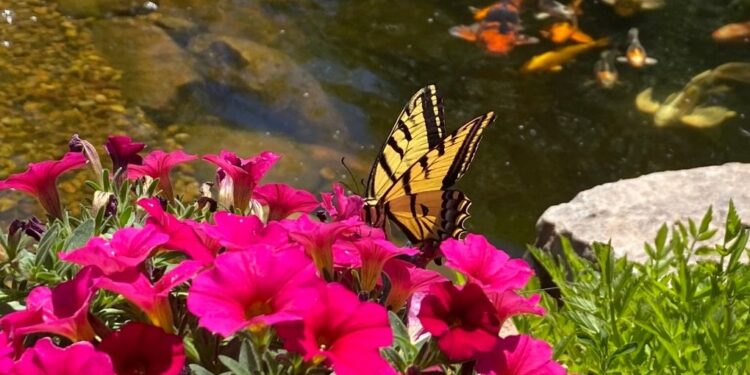

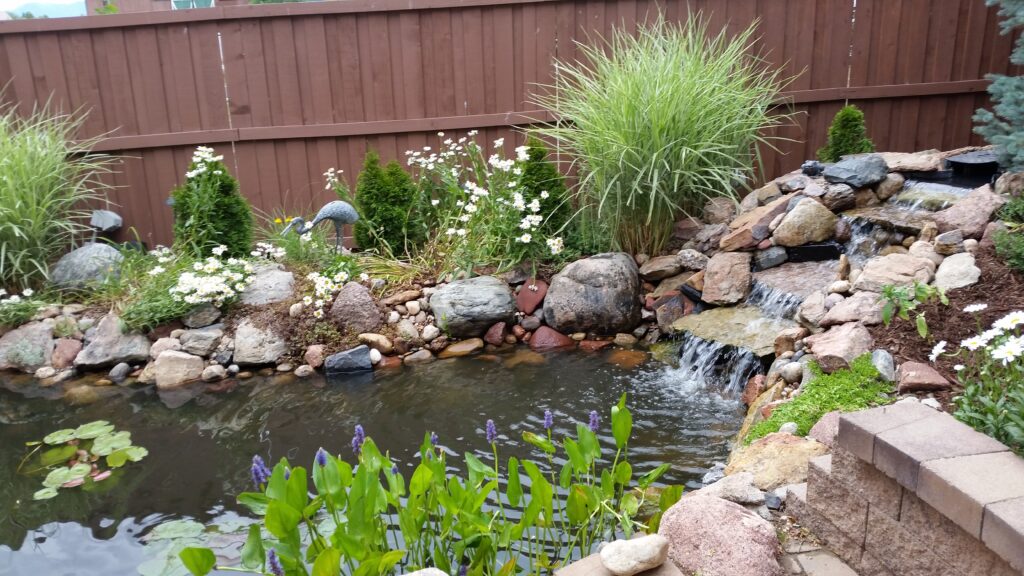


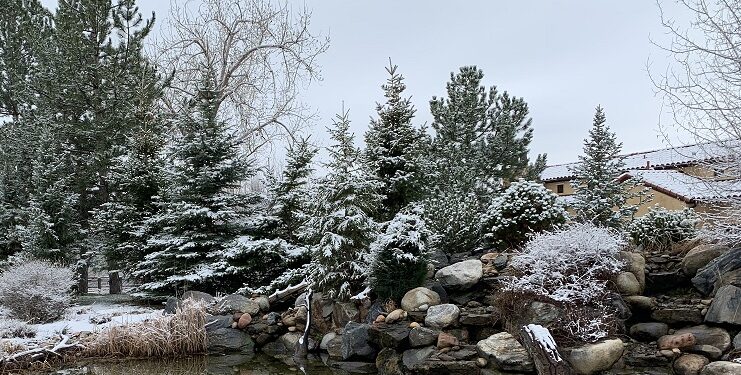

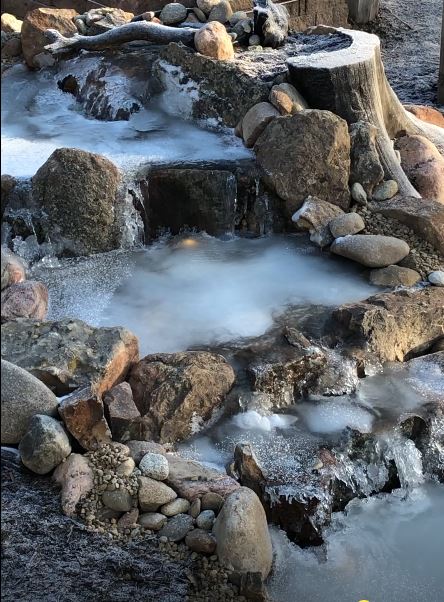
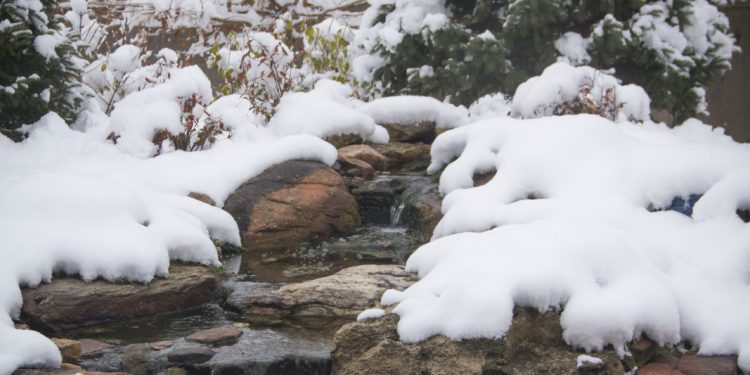
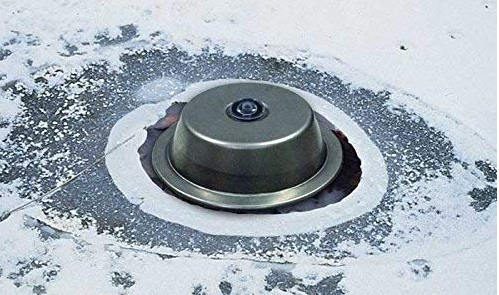

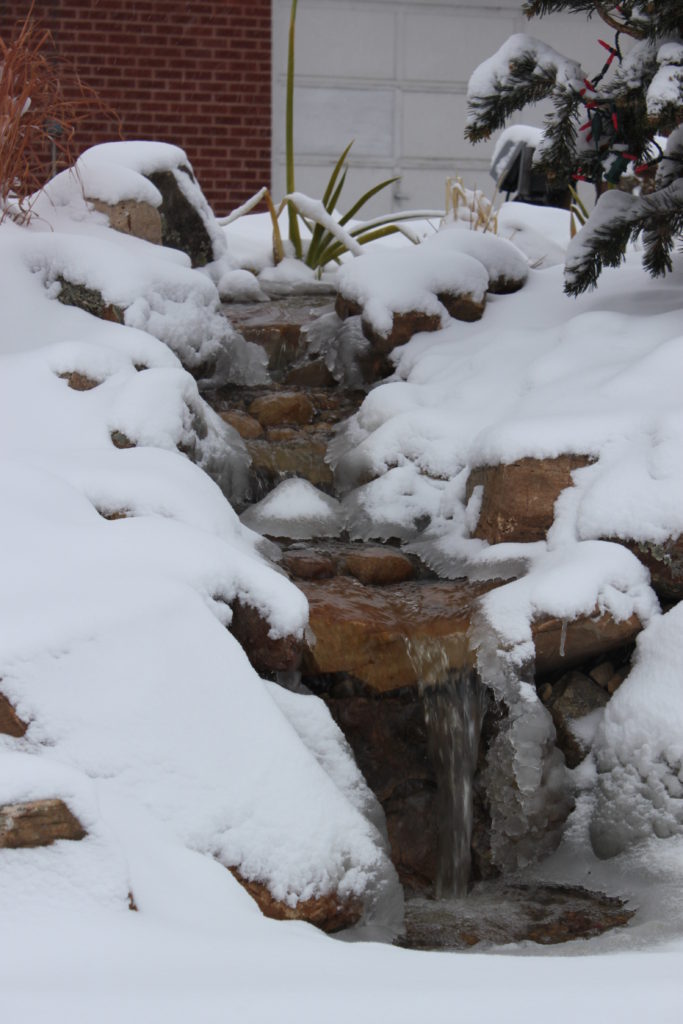
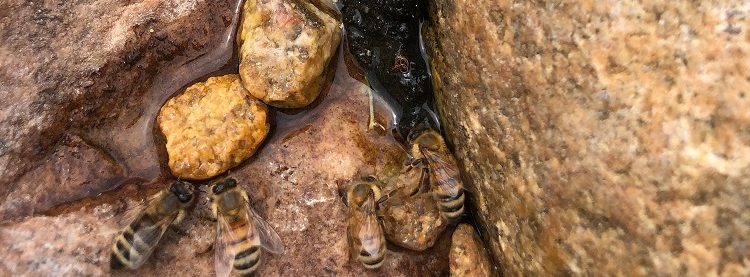
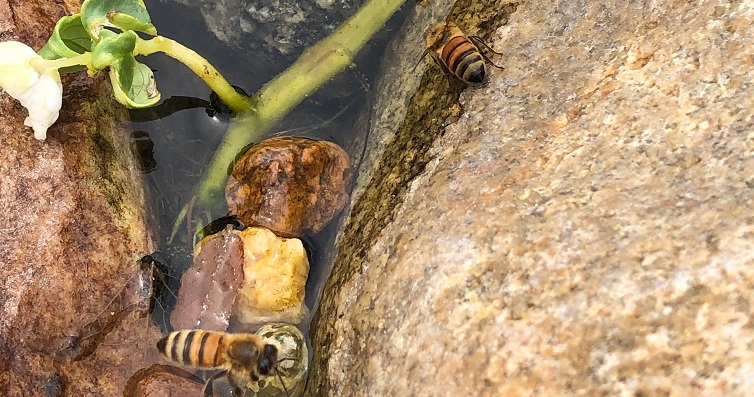

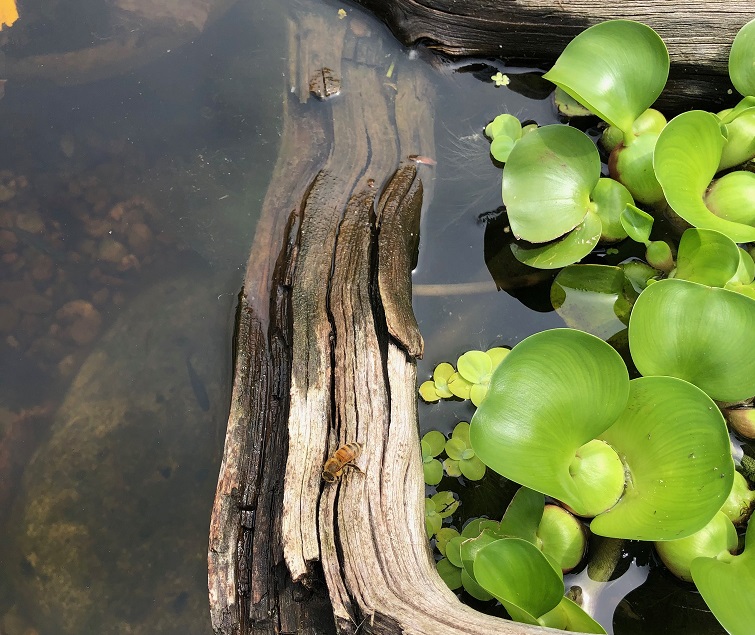

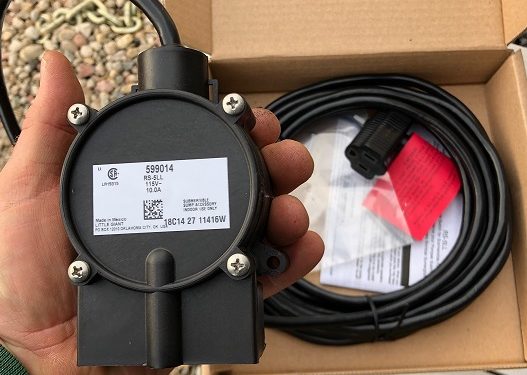
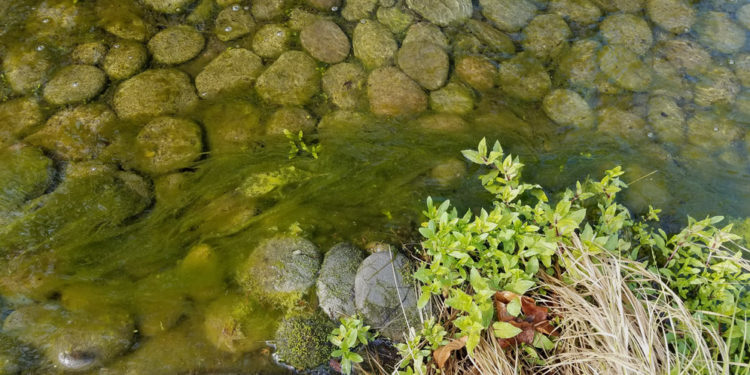

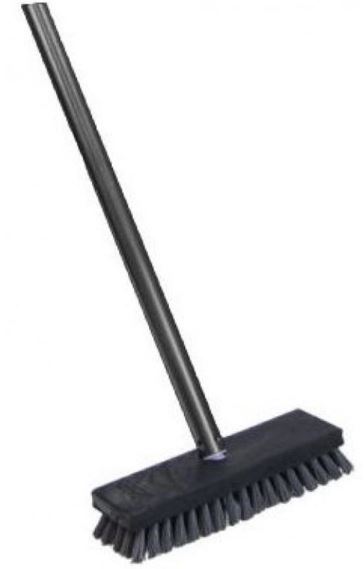 A little every day can help as you get the pond in balance.
A little every day can help as you get the pond in balance. 